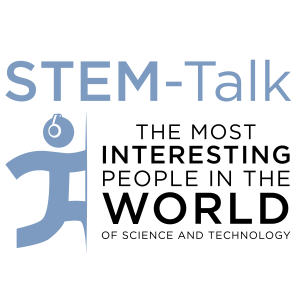
Episode 81: Charles Brenner discusses NR and the benefits of boosting NAD as we age
 2019-01-22
2019-01-22
Download
Right click and do "save link as"
Our guest today is Dr. Charles Brenner, the Roy J. Carver Chair of Biochemistry at the University of Iowa.
Charles is one of the world’s leading experts on nicotinamide adenine dinucleotide, commonly referred to as NAD, which is an essential molecule found in every living cell. In 2004, he discovered the nicotinamide riboside kinase pathway, which leads to a special form of vitamin B3.
We talk to Charles about his research into NAD and why he believes supplementation with NR could help people age better. In addition to his work at the University of Iowa, he is also the chief scientific advisor for ChromaDex, which markets the NR supplement Tru Niagen.
In today’s interview, we cover:
[00:06:29] How Charles became the first cancer biology graduate student in the biology department at Stanford University.
[00:07:51] Charles’ research into nicotinamide adenine dinucleotide (NAD) during his time on the faculty at Thomas Jefferson University.
[00:09:15] Charles’ discovery that nicotinamide riboside (NR) is a precursor of NAD.
[00:19:47] Why Charles doesn’t use the term “anti-aging.”
[00:25:52] The importance of nicotinamide adenine dinucleotide phosphate (NADPH) and its role as the central regulator of reactive oxygen species toxicity.
[00:34:56] The circadian rhythms of NAD and the potential benefit of diurnal dosing.
[00:38:45] Why skeletal muscle is one of the most sensitive target tissues for the anti-aging effects of NMN.
[00:45:42] How the benefits of a ketogenic diet, intermittent fasting, time restricted eating could be related to NAD.
[00:47:02] A recent human trial conducted by the University of Colorado that found Niagen increased NAD+ by 60 percent in healthy middle-aged and older adults after just six weeks.
[00:49:19] The optimal dose of NR for humans.
Show notes:
[00:03:06] Charles talks about growing up as a kid who dreamed about becoming either a comedian or rabbi.
[00:03:26] Charles describes his success on the math team in high school and how he also enjoyed playing tennis and running cross-country.
[00:03:43] Charles reflects on his decision to attend Wesleyan University.
[00:04:09] Although Charles decided to major in ecology, he found out upon arriving at Wesleyan that they did not have an ecology department.
[00:05:05] Dawn mentions that after graduating with honors in biology, Charles traveled across the country to work in the Bay Area. She asks him what he did.
[00:06:29] Charles talks about when and why he became interested in cancer research, and how he was the first cancer biology graduate student in the biology department at Stanford University.
[00:07:51] Dawn asks about the work Charles did from 1996 to 2003 on nicotinamide adenine dinucleotide (NAD) during his time on the faculty at Thomas Jefferson University.
[00:09:15] Ken brings up Charles’ research at Dartmouth, asking about his discovery that nicotinamide riboside (NR) is a precursor of NAD.
[00:12:35] NAD is a coenzyme found in all living cells. It serves both as a critical coenzyme for enzymes that fuel reduction-oxidation reactions, carrying electrons from one reaction to another, and as a co-substrate for other enzymes. Charles gives an overview of the research into NAD and its relationship to overall health and age-related diseases.
[00:19:47] Dawn asks Charles why he doesn’t use the term “anti-aging.”
[00:20:54] Charles discusses how Verdin and numerous other investigators have reported that NADcontent declines with age in multiple organs, such as pancreas, adipose tissue, skeletal muscle, liver, skin, and brain, as well has his own hypothesis.
[00:25:52] Charles gives an overview of nicotinamide adenine dinucleotide phosphate (NADPH), which is particularly important because of its role as the central regulator of reactive oxygen species toxicity.
[00:29:19] Dawn asks about experiments Charles’ lab conducted on mice that looked at obesity and type-2 dia...
view more
More Episodes
012345678910111213141516171819
Create your
podcast in
minutes
- Full-featured podcast site
- Unlimited storage and bandwidth
- Comprehensive podcast stats
- Distribute to Apple Podcasts, Spotify, and more
- Make money with your podcast
It is Free
- Privacy Policy
- Cookie Policy
- Terms of Use
- Consent Preferences
- Copyright © 2015-2024 Podbean.com



